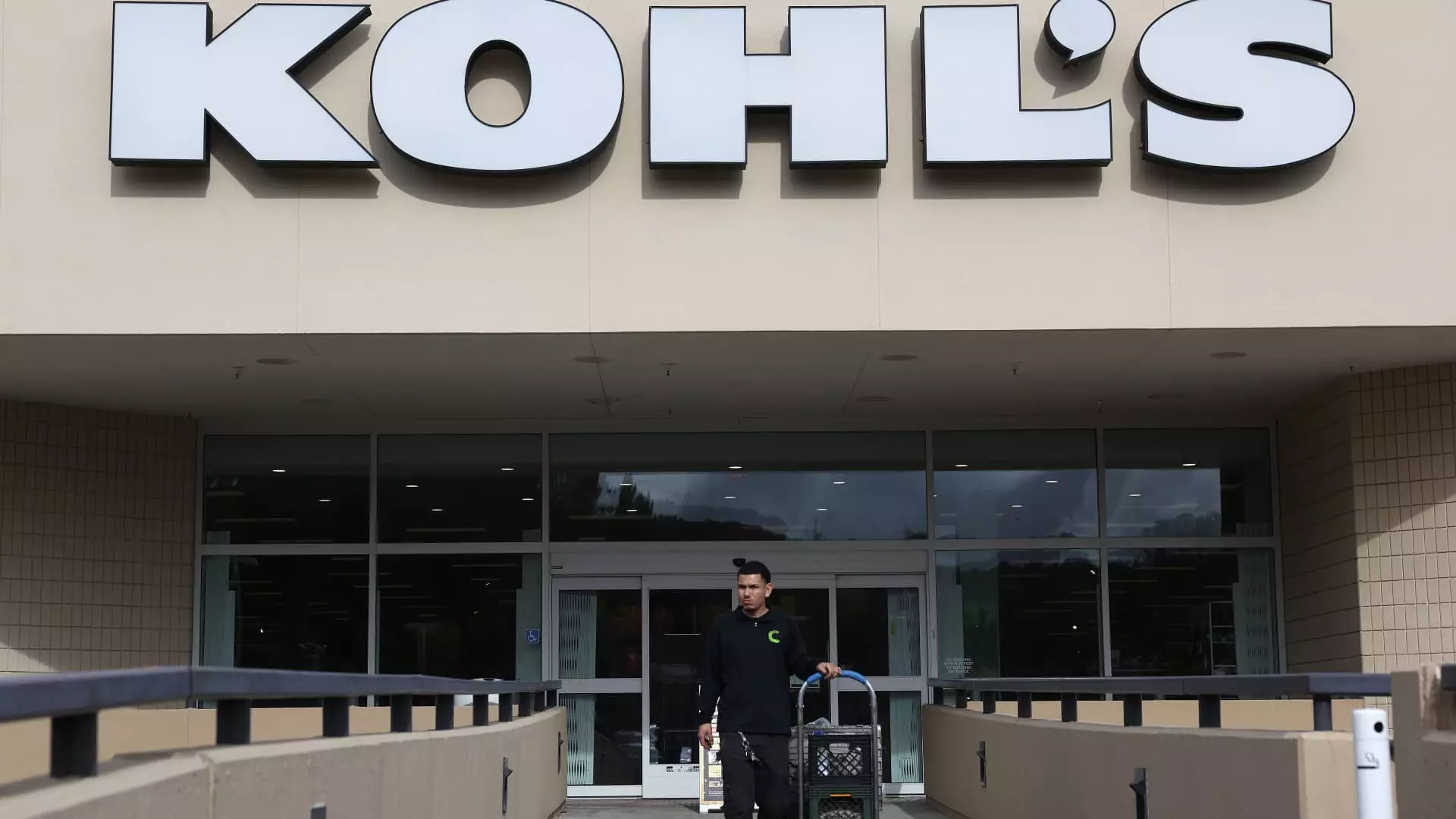Kohl’s, a prominent name in the retail sector, recently reported an earnings surprise that befuddled both analysts and investors alike. While the company nudged ahead with an earnings per share (EPS) of 95 cents against the expected 73 cents, the market was not prepared for what lay ahead. The real shock came with the announcement of its guidance for fiscal 2025, which painted a grim picture. Investors, already jittery, saw the company’s stock tumble by over 20% in early trading, reflecting not only disappointment but also a critical reassessment of Kohl’s viability in the competitive retail landscape. The alarming projections—a revenue decrease of 5% to 7%, coupled with a staggering expectation of a 4% to 6% drop in comparable sales—suggest that Kohl’s is on a slippery slope that the company hasn’t fully acknowledged.
Self-Inflicted Wounds: A CEO’s Candid Admission
CEO Ashley Buchanan’s recognition of missteps may initially seem like a refreshing dose of transparency, but it belies an unsettling truth—Kohl’s may have dug its own grave. Buchanan’s assertion that the company has lost sight of its core offerings, which historically drew loyal customers, is a damning indictment of past leadership decisions. The focus on new product categories while neglecting staples like fine jewelry and proprietary brands raises critical questions about Kohl’s strategic direction. It begs the question: how many missed opportunities does a business need to endure before it recalibrates its focus? Buchanan’s stance that this confusion has made it challenging for customers to remain loyal further underscores a failure to listen to the very demographic that should be at the heart of its strategy.
The Coupon Conundrum: A Barrier to Brand Loyalty
Further complicating matters, Buchanan highlighted the restrictions placed on its popular coupon offerings. This exclusion of brands from promotions reached its zenith in 2024, frustrating customers accustomed to the full breadth of Kohl’s offerings. In an ever-competitive retail space, where consumer loyalty is fragile and easily swayed by rivals, such miscalculations signal a lack of foresight and strategic customer engagement. The company’s attempts to right the ship by partially reversing these exclusions come off as reactive rather than proactive, showcasing a legislative approach rather than a strategic one. Loyalty isn’t just about sentiment; it’s about consistent, positive consumer experiences that affirm a brand’s place in a crowded market.
Economic Headwinds and a Dwindling Customer Base
Kohl’s isn’t operating in a vacuum; it faces external pressures that cannot be overlooked. Economic uncertainty is palpable across the retail sector, with various factors such as falling consumer confidence and ongoing inflation forcing lower-income customers to recalibrate their spending priorities. This part of Kohl’s consumer base—historically reliant on the retailer for affordable fashion—may have been pushed to the brink, opting for competitors offering more compelling value propositions. This shift not only highlights the fragility of Kohl’s customer loyalty but also casts doubt on its adaptability in a market full of dynamic, price-conscious rivals. The chilling forecast for 2025 echoes this sentiment, as Kohl’s stars increasingly dim in the spending priorities of a beleaguered consumer base.
The Long-Term Effects of Underperformance and Store Closures
The recent history of substantial layoffs and the shuttering of underperforming stores raises alarm bells regarding not just the immediate fallout but Kohl’s long-term sustainability. The decision to cut nearly 10% of its corporate workforce alongside the closure of 27 stores is indicative of drastic measures taken in response to mounting pressures. While the CFO may assert that “most Kohl’s stores are incredibly healthy,” this speaks more to select segments of the company than a holistic evaluation of the brand’s standing. With many store leases nearing renewal, Kohl’s faces pivotal decisions that could either mark a renaissance or deepen its struggles. Ignoring issues at the core of the business model will ultimately only serve to exacerbate the already precarious situation.
Consumer Behavior: The New Paradigm of Retail
Lastly, it’s essential to address the changing dynamics of consumer behavior. The post-pandemic era has ushered in new shopping habits; digital platforms have become indispensable, and traditional retail outlets are no longer the gold standard. Kohl’s reported a stagnation in digital performance, particularly in its legacy home categories, which signifies an urgent need for innovation. If Kohl’s fails to adequately adapt its digital strategy, it risks being left in the dust by competitors who understand the landscape. A strategic pivot that embraces technology and modern retail practices is not just advisable but necessary for survival.
As Kohl’s grapples with these daunting challenges, the question looming large is: can it find a way forward, or are we witnessing a slow but steady decline of a once-revered retail giant? The following years are critical, and it is with bated breath that stakeholders await a solution that seems increasingly distant.


Leave a Reply